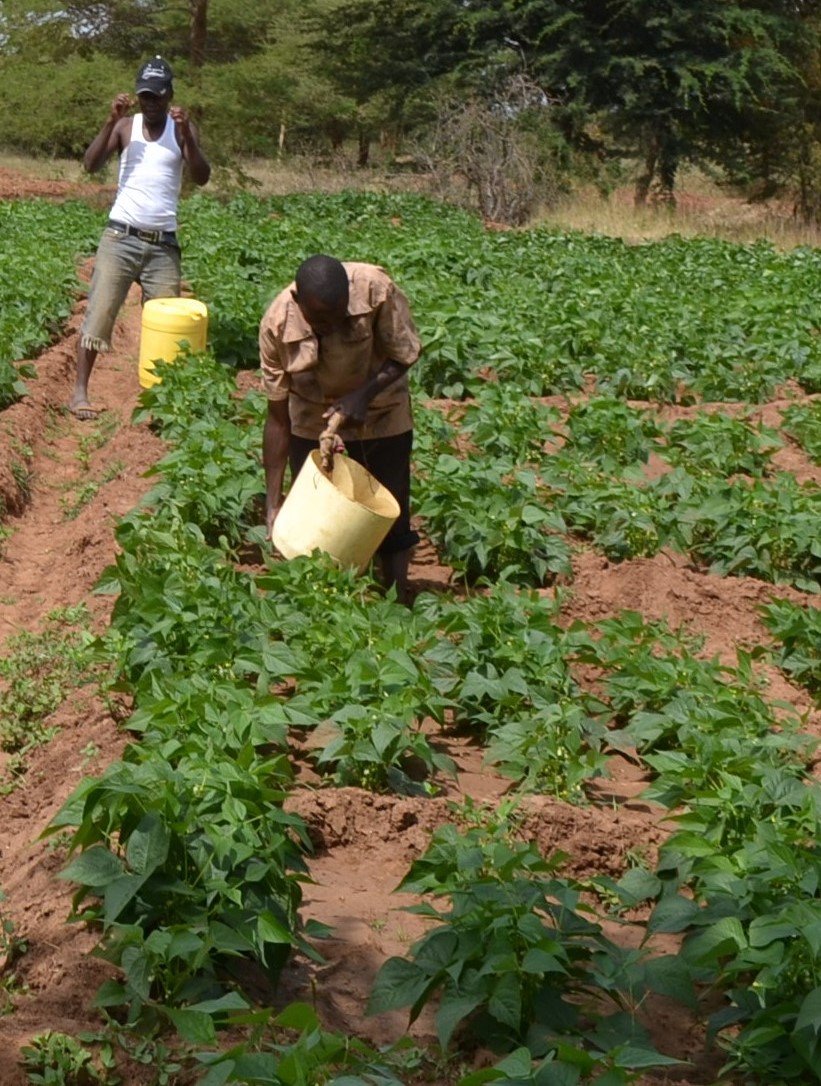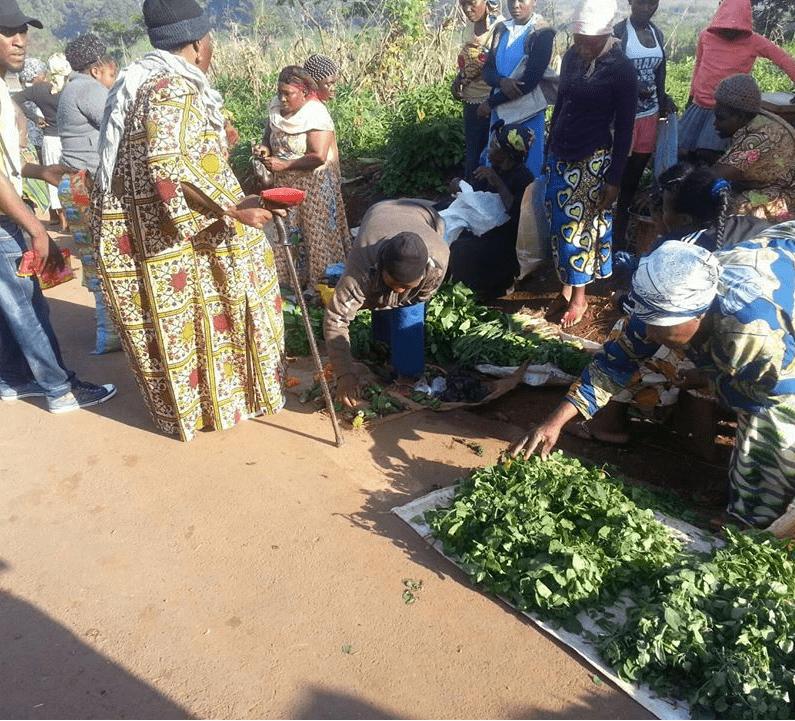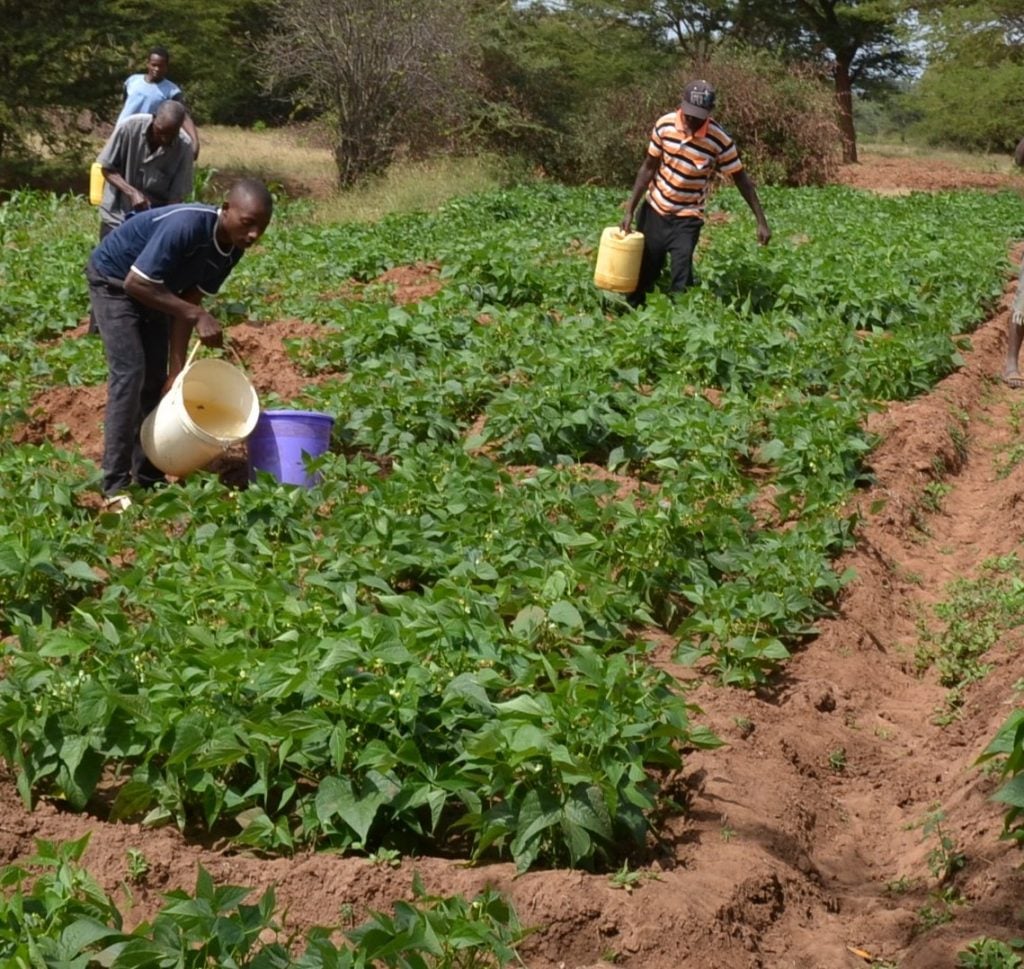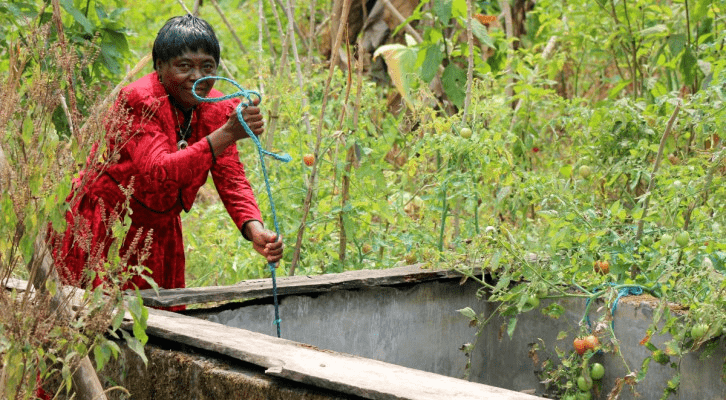Self-driven small scale irrigation schemes near river banks and running streams are helping farmers in Akum, and Santa in the Northwest of Cameroon get a year-round supply of their vegetable products, deal with climate stress and raise revenue for their family.
The farmers in this poverty-mired semi-arid and savanna region say they used to watch their vegetable patches dry up and die in drought periods, even though nearby rivers and streams offered a steady flow of water.
Bringing the water to their cultivating fields was nearly impossible because the area’s steep and rocky terrain made accessing the streams immensely difficult.
But now an irrigation channel system is allowing them to access water for their fields, helping them grow vegetables throughout the year and better manage worsening drought associated with climate change.
“We are grateful to God for providing us the streams through which we are tapping water to grow our crops. Even in the absence of rain, we are now sure of food on our tables and income to send our kids to school,” says Akwi Rachel, a member of Vegetable Farmers Group, one of the farmer's groups benefiting from the irrigation scheme in Akum.
The farmers’ indigenous irrigation system involves a network of constructed canals that uses the downhill flow of some streams to bring water to their cultivating fields in the Akum and Santa farming communities.
The two beneficiary communities are located on the flanks of the lush highlands of the semi-arid and savanna Northwest region of Cameroon from where some streams flow. But accessing the rough, stony and hilly terrain near the streams is a daunting task and especially impossible for the mostly women vegetable farming community. The farmers say they have long suffered from prolonged droughts that push their vegetation to slowly give way to a parched and barren terrain in the region.
“We could not grow our vegetables and other crops during the prolonged dry periods because of lack of water. We have been suffering even though we are blessed with nearby streams,” said Jude Awantung, a farmer in Santa.
“The irrigation we have initiated is a blessing to us as we now have good yields even in the prolonged dry periods,” Jude said.
With assistance from the Grass field Rural Infrastructure and Participatory Development Support Project, GP-DERUDEP, an agriculture support program for farmers in the Northwest region in 2013, the farmers were able to construct small canals through which water is channeled to their cultivating fields. Some built small water storage tanks in their farms from where water is pulled for irrigation during prolonged droughts.
“Under our support to rural infrastructure-agricultural development and capacity building scheme, we helped farmers with climate adaptation projects in drought-hit areas,” said Benjamin Fobuzo head of project executing unit GP- DERUDEP.
The irrigation project, he said, has gone a long way to improving the production and socio-economic environment of the main vegetable production basins in the Northwest.
The project GP-DERUDEP, officials say, was funded by the African Development Bank (AfDB) in 2013, to help finance the second phase of the Grassfield Rural Infrastructure and Participatory Development Support Project.
“We are happy the irrigation program is improving agricultural production and incomes of beneficiary communities,” says Gregory Muluh Ngu, coordinator of GP- DERUDEP.
The building, monitoring and maintenance of the water catchments and small dams in some cases is carried out by the community, and the system provides farmers in the area access to water all-year-around even as droughts caused by climate change devastate many other areas of the country.
The irrigation systems serve around 139,000 farmers and 84,600 agricultural laborers in the two district of Santa and Akum, who use it to grow assorted vegetables. With rain-fed agriculture becoming increasingly unreliable, support to a swelling number of farmers becomes evident, according to agriculture officials in the Northwest region.
“The irrigation we have initiated is a blessing to us as we now have good yields even in the prolonged dry periods.”
“Supporting irrigation has become crucial in drought-hit areas in the Northwest as rain-fed agriculture becomes increasingly unreliable. Replicating initiatives like these in other parts affected by drought will significantly boost food production in the country,” says Nutoto Godfrey, Regional Delegate of Agriculture and Rural Development Northwest.
These farmers, preponderantly women have the unique advantage of growing a variety of vegetable crops during the off-season (dry season), producing over five harvests in a year, which is supplied throughout the Northwest region and other big markets in the country thanks to the irrigation schemes, Nutoto said.
Cameroon's Northwest region has a population of 1,850,000 and a poverty rate of 51% and is home to 13% of the total number of the rural poor in the country, according to government statistics.
The irrigation projects have succeeded to bridge the yield gap of many food items and dramatically increased vegetable production at smallholder farm levels from hitherto less than 10% during the dry season to over 90 % currently. Growing maize and vegetables like huckleberry, cucumbers, lettuce, cabbage, tomatoes, okro, etc., is now an all-year-round business for these farmers resulting in increased income and better-living conditions, officials of the Northwest regional delegation of Agriculture said.
Short season crops like tomatoes, cucumbers, beans, peppers, lettuce and parsley and fruits like watermelons, are now available throughout the year regardless of the season, ushering a new era in the agricultural history of the North West region in particular, and Cameroon in general, the regional delegate for agriculture told InfoCongo.
On average smallholder farmers cultivate about 200m2 farm size irrespective of prolonged droughts.
The irrigation development program is not only helping to improve agricultural production and the incomes of the farmers but more importantly narrow considerably the food supplies void in the main cities nationwide primarily during the dry season.
“I now produce enough tomatoes for our local markets and bigger markets in Douala and Yaoundé even in the dry season,” says Jude Awantung
It is estimated to have raised annual vegetable production by about 37,000 tons as well as a yearly increase in income per producer from CFAF 250,000 (USD$500) in 2013 to CFAF 357,910 (USD$700) in 2016.
Pressure on food resources in Cameroon has increased notably, in the drought-stricken Northern and East regions.
A recent report by the UN Children's agency, UNICEF says Cameroon continues to face three concurrent and often overlapping humanitarian emergencies. These include an ongoing nutrition crisis in the North, Far North and East regions of the country.
More than 65,000 refugees from Nigeria and some 259,145 others from the Central African Republic (CAR) have come into host communities in the North, Far North, Adamawa and East regions of the country with very limited resources, aggravating an already ongoing nutrition crisis in these areas, part of the drought-stricken Sahel.

According to UNICEF statistics, an estimated 61,262 children under 5 in Cameroon are expected to suffer from life-threatening severe acute malnutrition in 2016 as a result of this ongoing crisis.
Government officials say agriculture remains the critical sector towards Cameroon’s economic recovery drive by 2035.
“Agriculture is key to the country’s drive towards growth. There is no economy and life without agriculture'" says Nutoto Godfrey.



